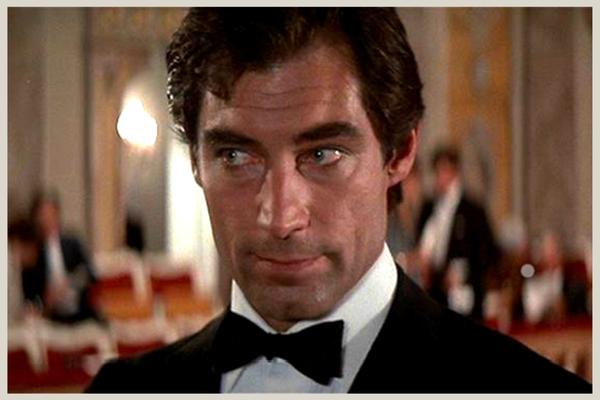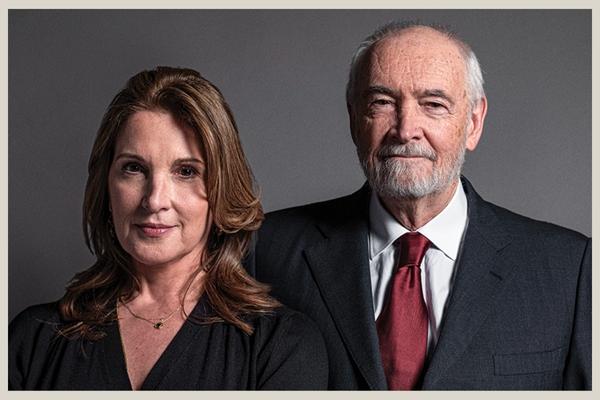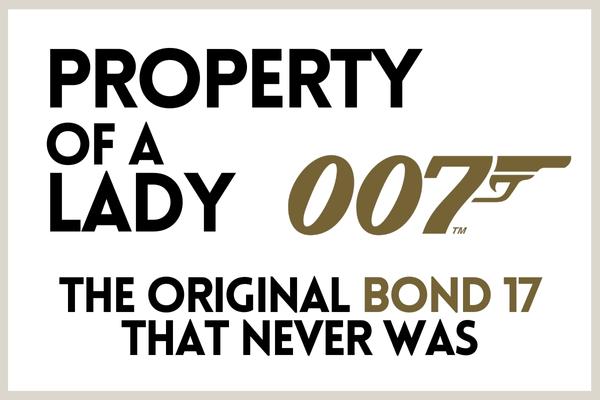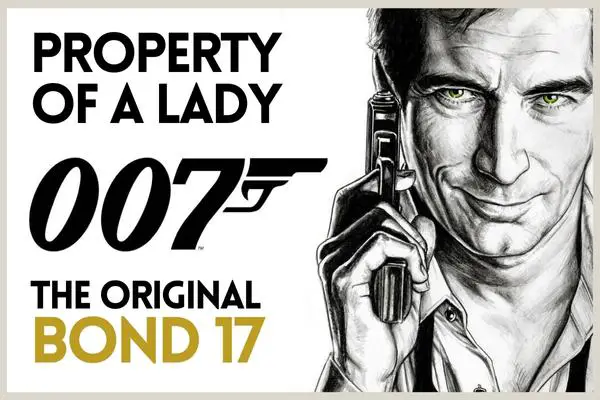The Original Bond 17 That Never Was
Timothy Dalton should have starred in at least 3 Bond films. He was contracted to do so over a seven-year period, but thanks to legal wranglings among the producers and financiers, we never got to see him as 007 after 1989.
The production for his third outing as Bond was in motion and the Original Bond 17, Property of a Lady, would have seen a new direction for Timothy Dalton’s 007 if it wan’t for the issues at the time.
Timothy Dalton’s portrayal of James Bond in The Living Daylights and Licence to Kill was a departure from the more lighthearted and suave versions of the character seen in previous films.
Dalton’s Bond was darker, more serious and more in line with Ian Fleming’s original novels. However, this approach wasn’t universally well-received by audiences, with some finding it too serious and lacking the charm and humour of previous incarnations.
That said, Dalton’s more realistic and grounded take on Bond was ahead of its time and would later be refined and embraced in the Daniel Craig era.

For many, it would have been nice to see another Dalton Bond film, and work had started on the film, so what would it have been like? In this blog post we take a look at the original Bond 17, Property of a Lady, a film that never was.
Why Wasn’t The Original Bond 17 Made?
The production of Bond 17, Property of a Lady, was put on hold due to a corporate litigation between Cubby Broccoli’s company, Danjaq, LLC, and Italian financier Giancarlo Parretti, who was the owner of MGM, the parent company of United Artists, which financed the Bond series.
The legal wrangles over the international distribution of Bond and the potential sale of Danjaq led to a six-year hiatus for the franchise on the big screen. These delays effectively halted plans for a third film featuring Timothy Dalton as James Bond.
By the time the legal issues were resolved, Dalton had lost interest in reprising the role, and United Artists were keen to make changes, so we never got to see Timothy Dalton as 007 for the third time.
The Original Bond 17 – The Property of a Lady
In 1989, Miami Vice writer Alfonse M. Ruggiero Jr submitted an outline for a new Bond film to producer Michael G. Wilson.

Although it was considered too similar to Licence to Kill, Wilson decided to collaborate with Ruggiero on Bond 17, and take Timothy Dalton’s Bond in a different direction from the more grounded Bond we’d got used to.
The new story explored the dangers of advanced technology, including robots, microchips, and other futuristic electronic devices, specifically for the film to achieve maximum visual impact.
The original Bond 17 opens with a dramatic scene at a chemical weapons lab in Scotland, where a malfunctioning robotic device causes destruction and chaos. The incident was part of a heated debate in the UK Houses of Parliament, with the Prime Minister assuring the government’s full resources will be used to investigate.
Bond is then called in by M for a briefing on his mission: to stop would-be Bond villain Sir Henry Lee Ching, a British-Chinese entrepreneur and tech genius who supplies advanced robotic devices to major companies.
Suspected of orchestrating accidents involving malfunctioning robots at other nuclear power plants, Sir Henry threatens to unleash a devastating computer virus on the world if the UK does not withdraw from Hong Kong.
We would have seen Bond on an action-packed journey through Hong Kong, Japan, and China, where he must stop the villainous Sir Henry Lee Ching. The climax of the story takes place in Sir Henry’s high-tech skyscraper, where Bond engages in a thrilling face-off with the Bond villain that never was.
The outline also sees the introduction of a new MI6 chief, Nigel Yupland, who views Bond somewhat as a relic of the Cold War, similar to Judi Dench’s character in her reign as the MI6 chief M.

Screenplay Made More Changes
Screenplay writers William Osborne and William Davies were then hired to draft the Wilson/Ruggiero outline of the original Bond 17 into a screenplay, and this version introduced several changes.
Their version begins with Bond infiltrating a Libyan chemical weapons factory while pretending to participate in a powerboat race.
Bond outwits the facility’s high-tech robot guarding system and Colonel Al-Sabra of the Libyan State Secret Police, but fails to destroy the plant, but the facility soon explodes in the background.
He then returns to London and MI6 HQ where he finds new MI6 chief Nigel Yupland on a cost-cutting mission. It looks like the Q Branch is set to close operations, and Miss Moneypenny is to be married.
The plot centers on the theft of a new stealth fighter jet, the Scimitar, which is worth billions in arms sales to the UK economy. It’s stolen during a US Navy exercise, and Bond is tasked with tracking it down. He discovers that the thief’s plan is to use it to launch an undetected nuclear attack on China, in order to force a regime change that would see the hardline military leader General Han assume control.
Once in power, Han will hand over Hong Kong to industrialist Sir Henry Ferguson to use as his principality. Ferguson is plotting from a secret lair in Kowloon, with the help of gangsters the Vinellia Brothers.

A New Dalton Bond That Never Was
The original Bond 17 was an ambitious Bond film project that aimed to reposition James Bond as a more reluctant and aging hero in the post-Cold War era.
The project was intended to revive Timothy Dalton’s Bond career, which had seen some early setbacks. However, due to the legal disputes between Danjaq and MGM, the project was put on hold and ultimately cancelled.
The original Bond 17 was scheduled to be released in late 1991, but was left on hold. When work resumed in 1993, the decision was made to take the story in a new direction.
The producers ultimately chose an outline pitched by writer Michael France, set in a post-Cold War Russia, amid growing tensions over weapons of mass destruction – GoldenEye anybody?
This new direction would have been a departure from the previous Bond films and would have explored more serious and relevant themes, reflecting the changes in the world at the time.
Timothy Dalton’s contract was set to expire at the end of 1993, and with the film still not started with production he decided to hang up his tuxedo, so the film never got started.





